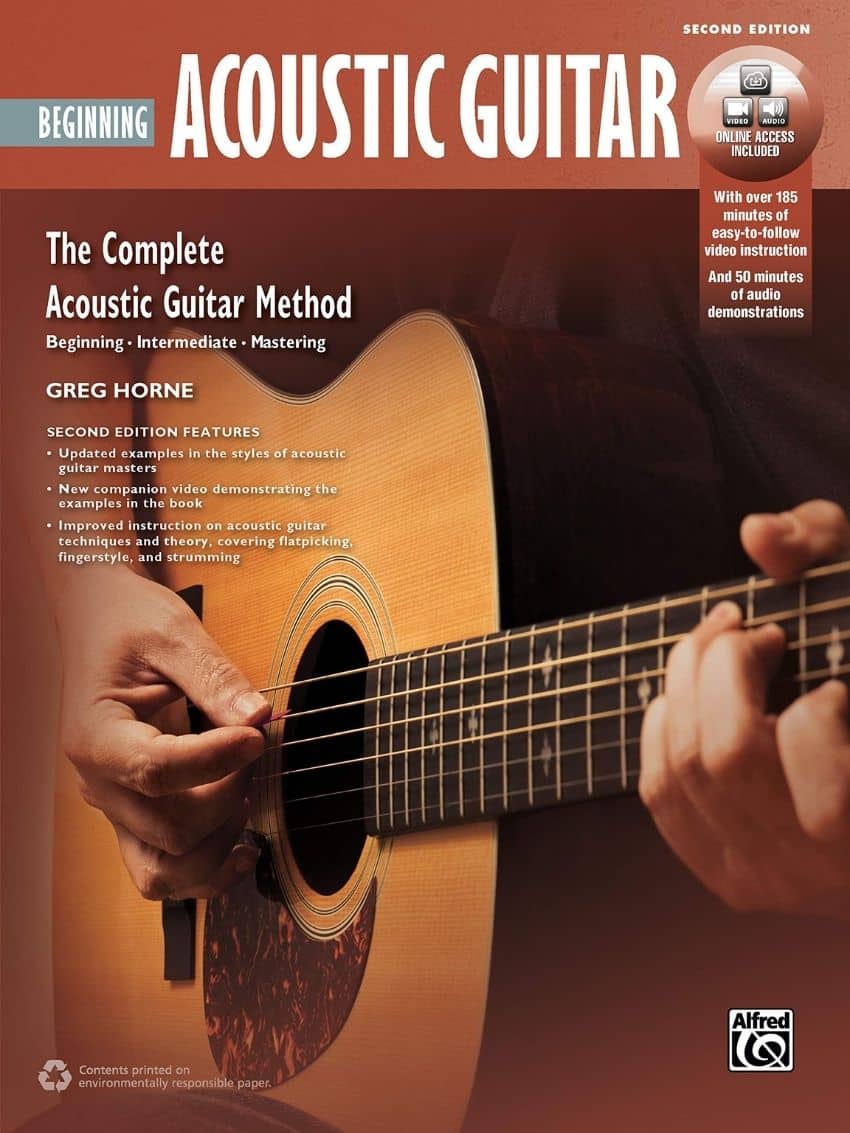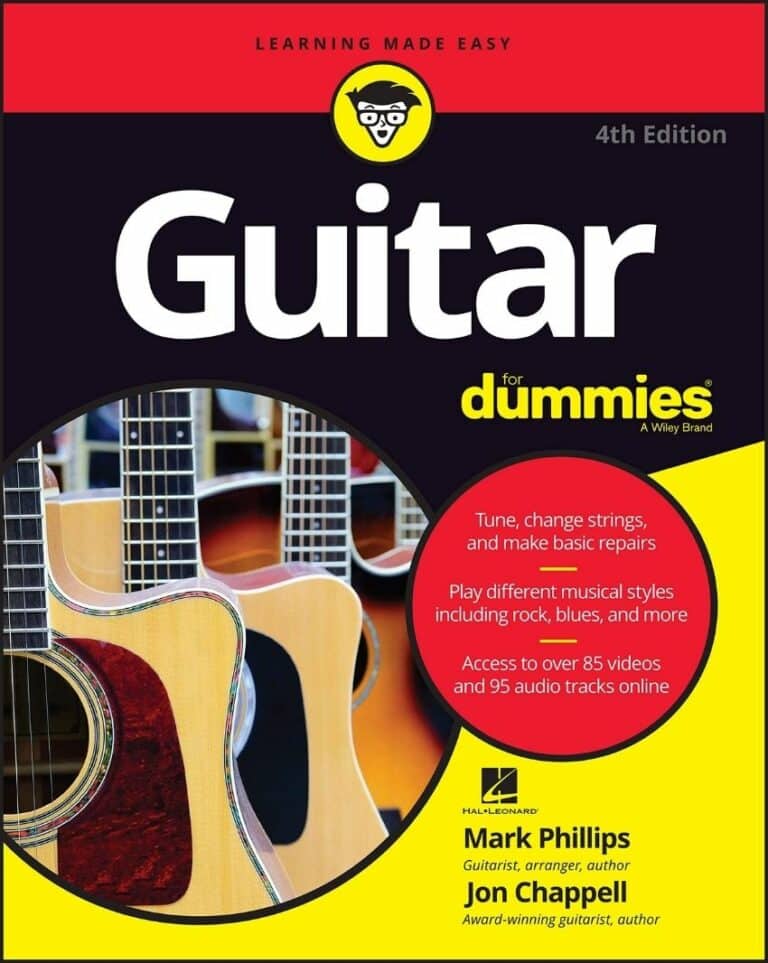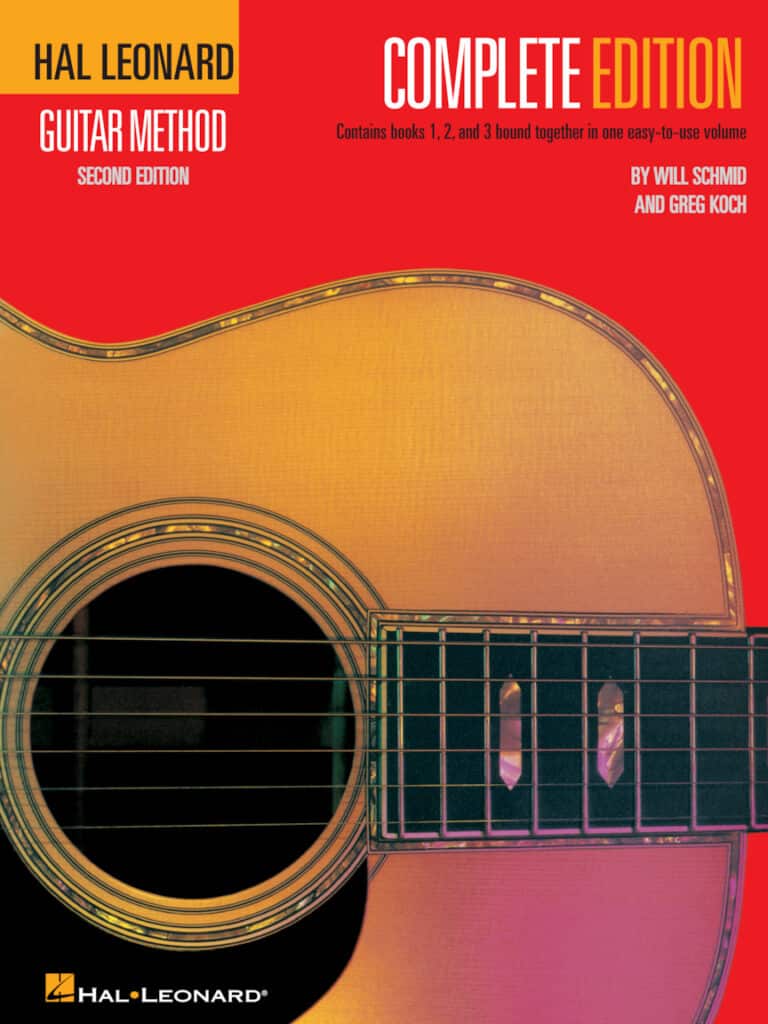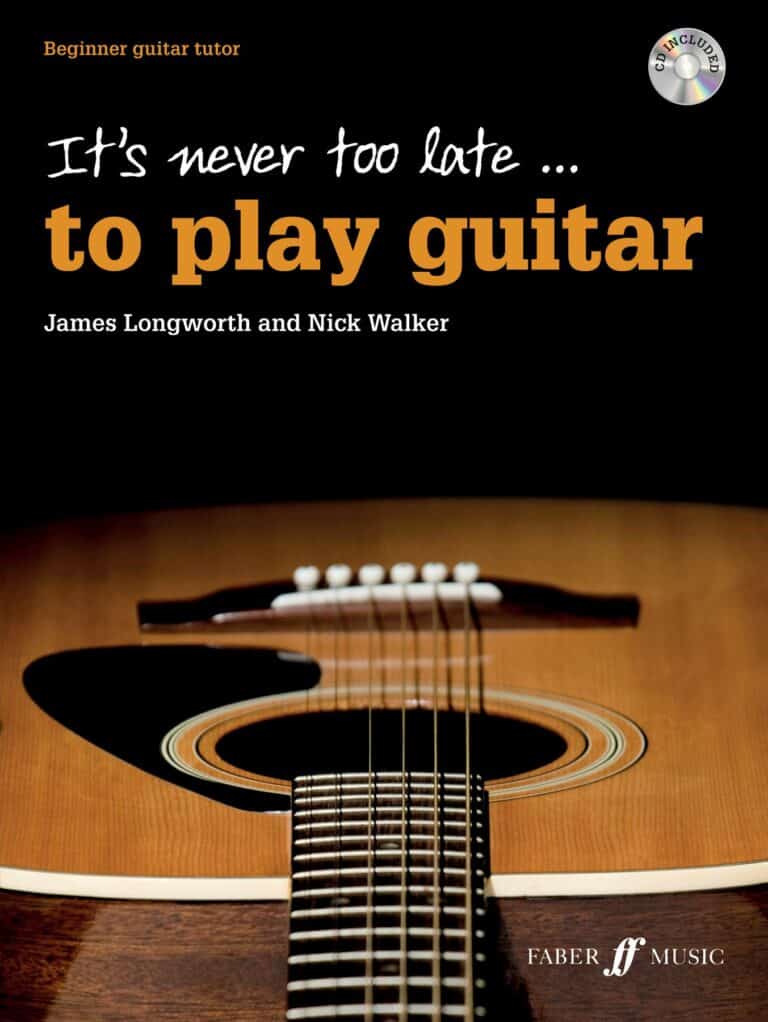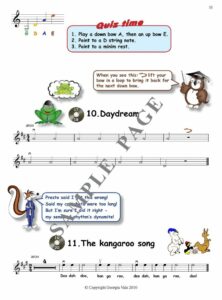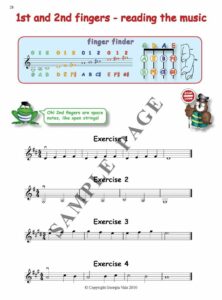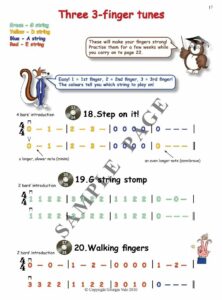The 3 best guitar books for beginners
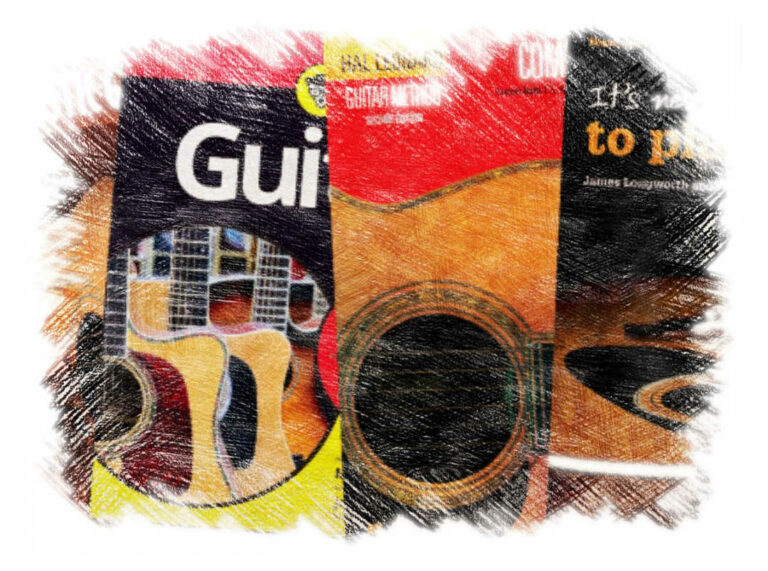
What’s the benefit of having a guitar book in an age where you can learn effectively through videos?
There are still some really important reasons why having a good book is a must:
- A well-structured guitar book will give you a good overview of everything you have to learn. Being able to see the big picture is one of the key concepts in skill acquisition.
- It’s an all-in-one package that contains all the sheet music, tabs and material you need to learn the topic. Some books even come with video material.
- They have a logical progression where the next chapter builds on what you have already learnt. This is vital if you want to understand what you are learning and to make it stick.
- Memorising information is easy with a book as looking something up is a quick page-flip away. And you have the peace of mind that the information you rely on and have become attached to will stay with you forever. It won’t be deleted from any web server.
To take advantage of all the good things that come with a book, you need a book that is designed for the style you want to learn.
Books are very personal. The best book for you depends on your personal taste. When buying a book, the best thing you can do would be to visit a physical music shop where you can flip through some pages. Then you can choose the one that speaks to you.
That’s not always convenient. So I have written this post in a way that gives you all the information you need without having to travel to a distant music shop. It will soon contain more example pages of the contents of each book.
The books below are the best and most popular books in their respective approach. So if one of the descriptions below resonates with you and you choose that one, you can be confident that you have chosen a great book for the style you want to learn.
1. The Complete Acoustic Guitar Method
The best option for people who like acoustic guitar and fingerpicking style playing
Author: Greg Horne
What you will be able to do after having gone through this book:
- Know the most important chords that you need to accompany yourself and others singing.
- Accompany any song in a fingerpicking style
- Understand enough music theory to be able to play most pop songs from a chord sheet or piece of sheet music.
The Complete Acoustic Guitar Method is one of my favourite guitar books for beginners. It’s the first of a three-part guitar series (Beginning, Intermediate and Mastering) and is the perfect journey for anyone who is serious about learning to play acoustic guitar.
It starts at the very beginning and explains a few things that are vital to know to understand how music works. Then it very quickly introduces three super easy chords that you can use to play some songs with right away.
If you already know how to play some chords, you can skip a few chapters ahead where the author starts introducing you to more interesting chords that will make your playing sound 10 times better.
You will also get an introduction to a few different styles, such as blues, bluegrass and jazz. You will also learn about barre chords, music theory and some improvisation.
As with all books, there will probably be some songs in it that you don’t like, but you can find alternative songs online that use the same chords that are just as good to solidify something you have learnt in a chapter or section.
Finding alternative songs can sometimes be hard to do on your own and this is one of the exact reasons why people book a few lessons with a guitar teacher. A good teacher will be able to guide you towards songs and material that you enjoy playing more. And this is what will keep you motivated to keep practising.
This book does a great job of teaching you how to become an all-round acoustic guitarist. You will get confident accompanying songs while you or others sing, and you will also know enough to be able to sustain a blues jam.
It also covers some famous fingerpicking patterns which are a must on those nights where your friends beg you to wack out the guitar.
The author, Greg Horne, has written multiple books for the mandolin and the guitar, so he really knows what he is talking about.
In my opinion, this book will suit most people, and I would highly encourage you to go through all three books.
2. Guitar for Dummies
Good for absolute beginners who needs guidance on every single aspect of guitar playing
Author: Mark Phillips & Jon Chappell
What you will be able to do after having gone through this book:
- Learn the basics of a variety of styles
- Gain a lot of knowledge about the guitar and music
“Guitar for Dummies” is a very detailed book. This makes it really good as a reference book. A lot of people love it for its comprehensiveness, and some people hate it for the same reason.
This book really covers it all. You will get guidance on how to buy a guitar and all the other equipment that you might need.
It offers a complete step-by-step guide into the world of the guitar and music in general.
For some, it could be a bit overwhelming since it contains so much information. But for others, this might be a good thing. It means that it’s a one-stop solution for everything you need to know about the guitar.
If you manage to get through this whole book, you might end up being more knowledgeable than a lot of guitar players out there.
3. The Hal Leonard Guitar Method
Good for those who want to learn both electric and acoustic guitar or is not sure which one to choose yet. Also good for those interested in classical guitar.
Author: Will Schmid & Greg Koch
What you will be able to do after having gone through this book:
- Know the most important chords and techniques to become a solid all-round guitarist.
- Get a handful of riffs under your belt in different styles.
- Gain confidence in both the electric and acoustic guitar
- Read sheet music
The Hal Leonard Guitar Method is a really popular book and one of the most famous ones out there.
It’s super comprehensive and progresses in a natural way that makes complete sense.
It’s an amazing book but has one main drawback that nags a lot of people. It focuses a lot on reading sheet music which makes learning the guitar harder than it needs to be. Tabs are much easier to learn from. However, reading music is essential if you want to get into classical guitar. So if classical guitar is your thing, The Hal Leonard Guitar Method is your best choice.
This book suggests that you play a lot of single-note melodies to learn where the notes are on the guitar neck. It can be useful, but not the best and most fun way in my opinion (unless you want to learn classical guitar).
4. It’s Never Too Late to Play Guitar
Author: James Longworth & Nick Walker
Often, original work and inventive creations spring up as a result of solving a problem. That’s the case with this book as well.
The author, Georgia Vale, made this series of educational books because she didn’t find any books that worked well for her and her students when she was teaching. She began creating her own violin books for beginners. After she started to use Hey Presto with her students, she immediately got really good reactions from them, and they became more engaged.
Something I really like about this book is that it includes prompts for how long you should practise the exercises for, and sometimes why you should practise them. This gives the students an understanding of why it’s a good idea to play exercises alongside tunes and melodies.
Since the explanations are written in their language, it gives young players the confidence to attempt to understand music theory on their own accord between lessons. It’s also easy for parents without a musical background to understand the music. This makes it possible to help their child if they’re struggling with something. And this is partly the reason why the author made this book. The charts are colourful and visual. All of this together will give young violinists a strong and fun start on their violin journey.

